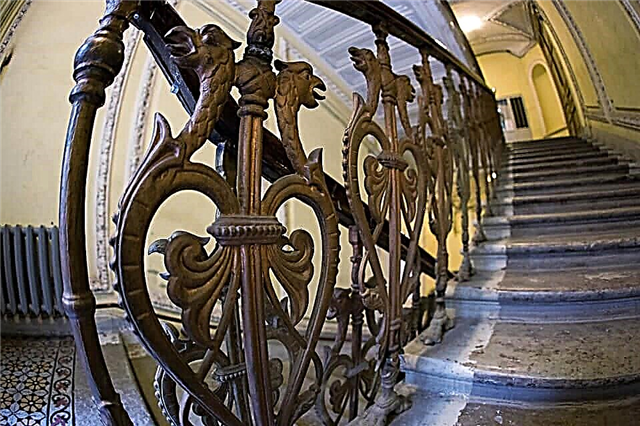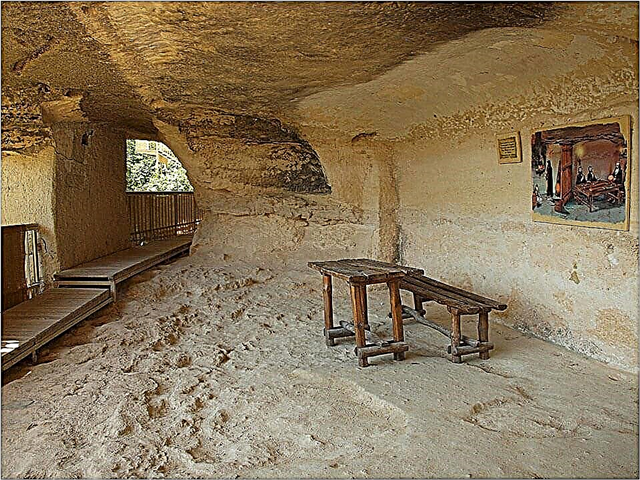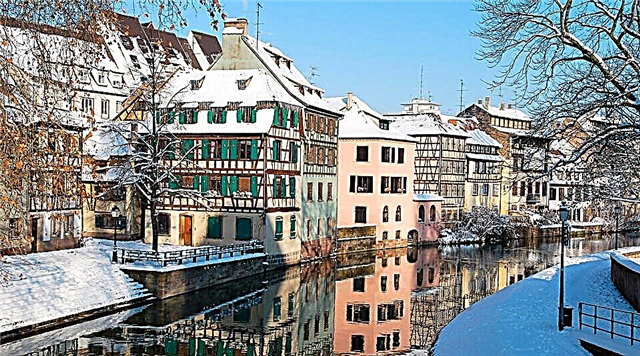Location: Mongolia
Area: 2620 km²
Maximum depth: 262 m
Coordinates: 51 ° 09'24.1 "N 100 ° 31'32.2" E
Content:
The name "Khubsugul" in Turkic means "lake of blue waters". The pearl of Mongolia lies at an altitude of 1645 m. This lake is considered one of the oldest on the planet, since it appeared more than two million years ago in the crater of an extinct volcano. Khovsgul attracts tourists with the beauty of the taiga nature, colorful Mongolian life and excellent fishing.

Geographic features
The giant freshwater reservoir stretches for 136 km and is 36.5 km wide. Its depth reaches 262 m. More than 90 rivers and streams flow into Khubsugul. The lake water is so clean that it can be used for drinking. Here, from 1 to 2% of all fresh water available on our planet is concentrated.
The Mongolian reservoir is often called the younger brother of the Russian Baikal. It looks like the largest lake in the world with the shape and landscapes of its shores. In addition, the underwater basin of the Khubsugul, like that of the “older brother”, has asymmetric slopes.
Both lakes lie on the same geological fault and there is only 230 km between them. From the Mongolian reservoir flows a tributary of the Selenga River - Egiin-Gol, which carries its waters into the largest freshwater reservoir of the planet. But before the water from Khubsupul enters the Siberian lake, it makes a path of 1000 km across the vastness of the Mongolian steppes and the Russian Transbaikalia.

View of Munku-Sardyk
At the end of autumn, with the onset of cold weather, the water in the lake freezes, and by the middle of winter the ice thickness on Khubsugul reaches 1.4 m. Since this lake lies at an altitude of more than 1.5 km above sea level, it thaws only by the beginning of summer. However, even in the hottest months of the year, the water in the Mongolian reservoir does not warm up above + 10 ... + 14 ° С.
Nature protection zone
Khubsugul is located on the border of the steppe expanses of Central Asia and the Siberian taiga zone and is part of a large national park, whose territory covers an area of 838 hectares. About seven and a half hundred species of trees, herbaceous plants, shrubs, mosses and lichens grow along its banks.
170 species of birds nest in the surrounding forests. Several colonies of herring gulls live on the lake, and on its shores you can see snow-white whooper swans, bustards and endemic mountain geese. Predatory vultures hover over the crowns of larch trees, looking for prey. Brown bears, wolves, moose, argali, Siberian ibex, wild reindeer, musk deer, roe deer, wolverines and sables live around the reservoir.

Herring gulls on the background of the lake
Opportunities for outdoor activities
The Mongolian reservoir is one of the most visited lakes in the world. It stretches at the foot of picturesque mountain ranges, and slopes overgrown with tall larches descend right to the water itself. Three islands are visible on the blue water surface. There used to be four of them, but the one that was in the north of the reservoir, opposite the mouth of the Turta, is now flooded with water.
On the southwestern coast is the settlement of Khatgal, and in the north - Khanh. They are connected by a bearable motor road along the east coast of the reservoir. The rest of the roads around the lake are forest roads. They lead through rocky areas, have deep sagging ruts, cross rivers, and therefore can only be driven by an off-road vehicle.

On the western side of the lake, there are no roads at all. This coast is completely overgrown with forest, and tourists walk here only on trails. A ferry runs across the pond, delivering passengers from shore to shore.
More than 35 tourist centers have been built on the lake, where travelers who come to Khuvsgul stay, and the number of places for tourists is growing every year. Vacationers can occupy small wooden houses or stay overnight in yurts.
The tourist infrastructure of Khankha is oriented towards the reception of Russians. At all tourist centers and shops, you can pay in rubles and explain yourself in Russian. Khatlag is a small village, and Mongols and travelers from other countries rest in it.

The deep lake attracts tourists not only with the beauty of nature, but also with the opportunity to get acquainted with the traditions of the Mongols. Residents can see sheepskin sheepskin coats - degely, decorated with embroidery and colored sashes. In the villages there are yurts, which the Mongols, like many indigenous people of Central Asia, make of warm felt, and long-haired yaks walk around them.
In these places, tourists have the opportunity to taste delicious national cuisine, many of which are cooked from lamb on hot coals. It is curious that the Mongols still use old Russian carbines for hunting. True, today, cartridges for them are made in China.

Tourist base "Alagtsar"
Hiking and cycling tours with overnight stays in tents are popular around Khovsgul. Tourists enjoy horseback riding in the Darkhat Basin and along the forested shore. In the cold season, the flow of travelers to the lake does not stop. In winter, dog sledding, bicycles and horse-drawn sleigh rides are in demand.
Fishing
There are nine types of fish in Khubsugur, and the most valuable of them are grayling and lenok. Fishing in these places is in great demand among Russian amateur fishermen. From Irkutsk to the Mongolian lake is about the same distance as to the Olkhon island on Lake Baikal. But the fish stocks of Khubsugul are incomparably richer and it is easier to catch valuable fish species here. Experienced fishermen manage to catch huge lenoks and burbots in the Mongolian reservoir.

Yaks on the shore of the lake against the background of the village of Khanh
Some tourists bring fishing tackle with them, while others take everything they need for fishing for hire at camp sites. You can also rent boats from locals. It should be borne in mind that it is legally impossible to export the catch from Mongolia to Russia. Therefore, everything that is caught is eaten on the lake. Delicious fish soup is excellently prepared in the canteens of local camp sites.
What to see on the lake
Nomads have long considered Khubsugul a sacred lake. The largest island, round in shape, Dalain-Modon-Kuis-Aral, located 10 km from the east coast, enjoys special reverence. It is overgrown with larch and has a mountain visible from afar in the center. On the east coast of the island there is a natural spit made of pebbles and boulders. This is a rare occurrence, since such braids are usually formed from sand.

Kitesurfing on the lake
Local residents keep many legends about the island. One of them tells how a powerful fountain burst out of the ground. The streams of water hit so hard that they began to flood settlements and pastures and kill many people and livestock. Then the Mongolian hero took a huge rock in his hands and threw it into the very middle of the fountain. There was no water and people were saved. The heroic rock turned into an island, and the spills around it began to be called Khubsugul.
A picturesque sandy beach surrounded by larch trees stretches 25 km from the south of the Khanh settlement. Tourists come here to swim and sunbathe.
From the lake, ascents to the highest point of the Eastern Sayan - Munku-Sardyk peak (3491 m) are popular, which is located on the border of Mongolian and Buryat lands. In addition, tourists who come to these places climb the Delger-Khan-Ula mountain (3093 m), which occupies a dominant position in the Khordol-Sardag mountain range.

Lake Khubsugul in winter
How to get there
Lake Khubsugul is located in the northern part of the country, not far from the Russian border. Russian travelers get there through the Mondy-Khanh international border checkpoint. The way to the lake, including crossing the border, takes about 6 hours. From the Russian side, an asphalt road leads from Kultuk to the checkpoint.
From the barrier of the checkpoint, the blue waters of Khuvsgul are already visible, but another 22 km will have to be driven to the lake along a mountain gravel road. After 6.5 km from the checkpoint there is a national park post, but tolls are not always collected from those passing through it.
From April 15 to September 15, the border crossing is open from 10.00 to 18.00. During the rest of the year, the checkpoint stops working an hour earlier. The checkpoint is closed on Saturdays, Sundays and public holidays. It should be borne in mind that only citizens of Mongolia and Russia can cross the border here.

It is better to fill up with gas before the road, as the filling station in Mondy may be closed. It is allowed to transport 10 liters of gasoline per person across the border. On the Mongolian side, a gas station is open only in the Khanh settlement, but it only has A-80 gasoline and diesel fuel.











